Horseback riding has often been associated with high-class society and impeccable attire. Yet, your clothes and equipment play a more important role. What you wear can impact your performance and affects how safely you can ride. So, what to wear horseback riding?
Luckily, equestrian fashion and function go hand in hand. You can wear proper equipment and still look stylish. The minimum you need is an ASTM and SEI-compliant helmet, long pants, boots, and a fitted top. With this in mind, let’s see in detail what you should wear and what mistakes to avoid.
What to Wear Horseback Riding
Helmet

An essential piece of attire when riding a horse is the helmet. Sure, a cowboy hat may look fancier, but protecting your head should be more important than appearance.
There are lots of different brands making horseback riding helmets in English and Western styles. You can also choose from various colors too; one thing to keep in mind, however, is that you should steer clear from second-hand or poor-quality helmets.
You can choose a helmet that is attractive, but at the same time, it should be comfortable and suitable for the type of riding you’re doing. Make sure the helmet is ASTM/SEI certified – only a certified helmet can give you a guarantee for safety.
Also, consider how the helmet fits. The one you pick should be tailored to your size. A small helmet will be uncomfortable to wear, whereas a bigger one won’t provide the necessary protection.
While most sports helmets are ASTM-compliant, you should look specifically for an SEI-certified helmet. The SEI certification means the helmet has been constructed specifically for horseback riding and that it can provide adequate protection in case of a fall.
Shirt/Jacket/Vest
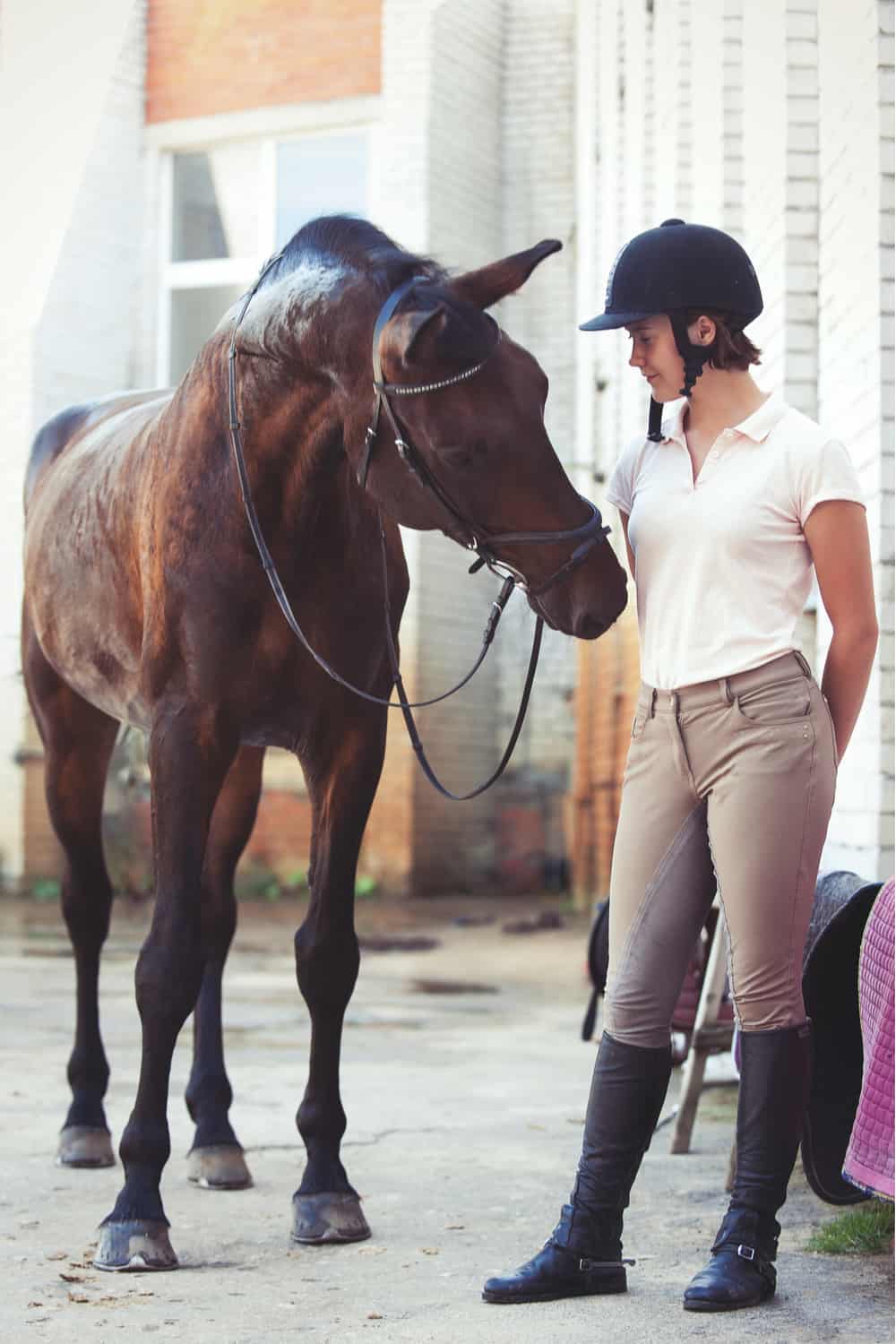
Clothing rules aren’t set in stone when it comes to the upper part of your body. As general guidelines, though, you should wear a shirt, jacket, or vest that doesn’t restrict movement.
Long- or short-sleeved tees are an excellent choice on warmer days. Button-up shirts could do if they allow you to move freely. However, any shirt you want to use should have a slightly tight fit – it must be comfortable but not loose enough to get caught in the tack.
The color doesn’t really matter unless you’re going trail riding. In that case, consider wearing bright colors for visibility.
Vests are an excellent choice for cooler weather. The greatest thing about them is that they’ll leave your arms free whilst still keeping you warm. Vests are also perfect for layering if you’re setting off to ride on a chiller morning but expect higher temperatures throughout the day.
When riding in cold climate areas, pick a horseback riding jacket or coat. The main difference is that jackets are short whereas coats are longer. Horse riding coats are fitted with gussets that spread over the saddle and don’t risk getting caught under the seat.
If you opt for a jacket, choose one with a looser design in the shoulder area, but that is fitted and short enough to prevent getting caught under the saddle.
Most riding vests, jackets, and coats have reflective tape and patches that increase visibility on the trail.
Pants
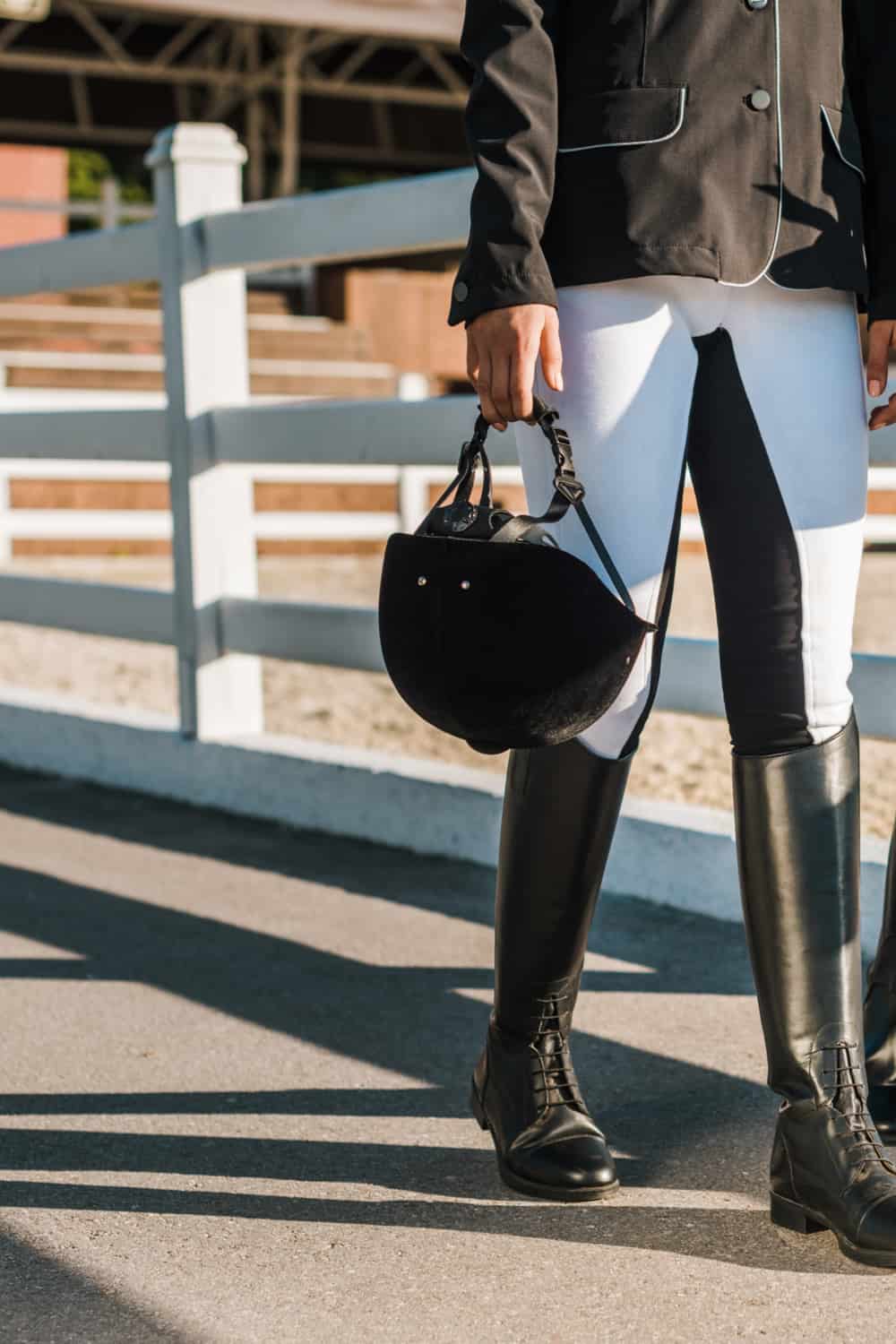
For the lower part of your body, the best thing to do is to invest in a pair of horseback riding pants, either breeches or jodhpurs. These pants are very similar to thicker tights or leggings but are made of stronger materials. The form-fitted shape prevents them from getting tangled or caught in the saddle when riding, increasing your safety.
Most horse riding pants designed for warm weather are made of two-way stretch fabric. Some models are reinforced with leather patches in the knee and seat areas. For colder weather, you should opt for a pair of slim-fit fleece pants.
You can also ride in jeans or sweats if you don’t want to invest in horse riding attire. However, you should avoid bottoms that twist or wrinkle along the inside of your leg.
Footwear
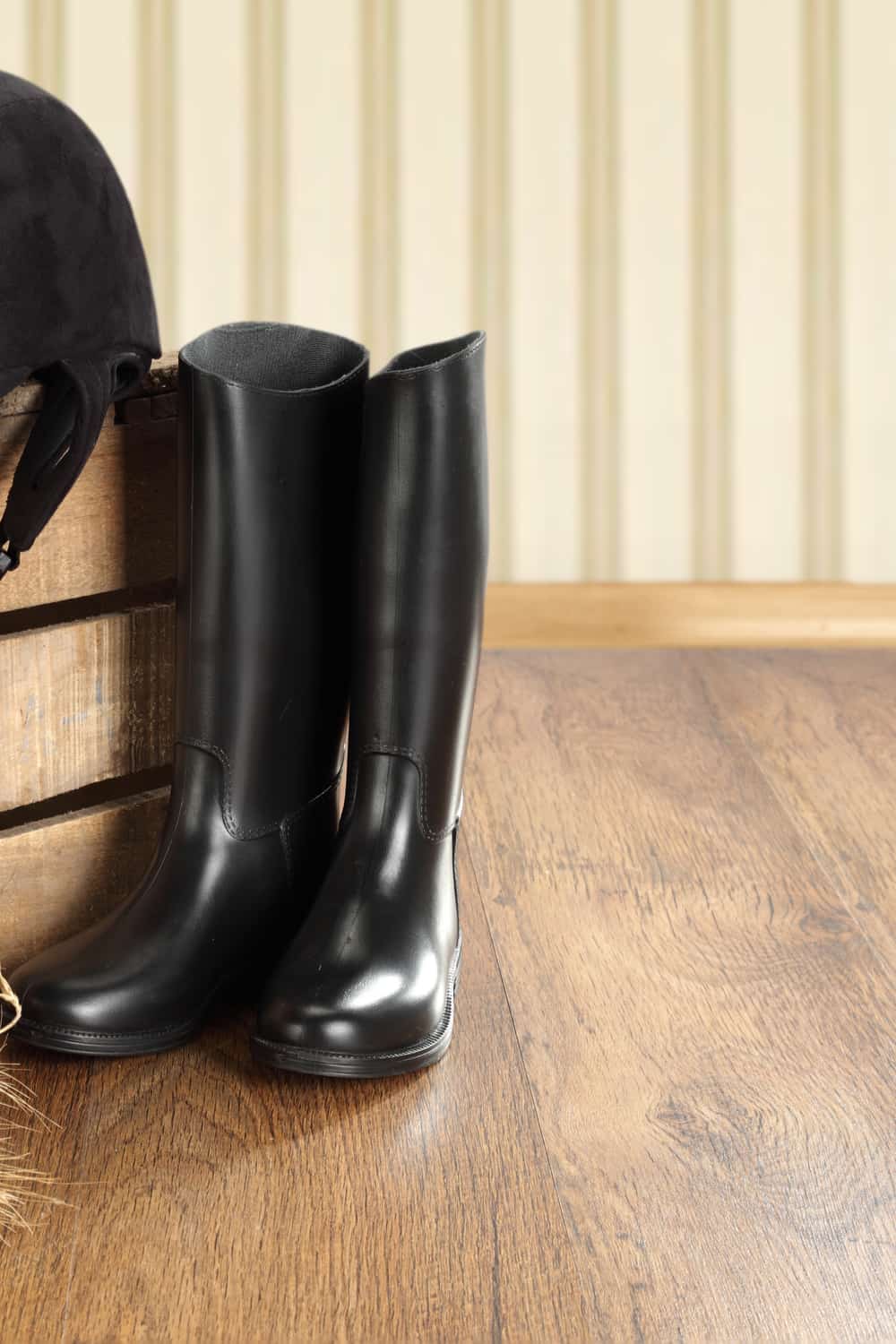
Alongside the helmet, your footwear is the most important purchase. There is no standard or rule set in stone, but you’ll want a pair of boots with a heel between an inch and an inch and a half. Leather is the material of choice for many horse riding enthusiasts; however, any material works as long as the upper is smooth and the boot doesn’t have laces.
The heel of the boot is critical to ensure that your leg won’t slip through the stirrups. If it does and you fall, you could risk being dragged wherever the horse is going – a potentially life-threatening situation.
When shopping for specific riding boots, you may come across terms as paddock and dress boots. The only difference between them is the height. Paddock boots have an ankle height, whereas dress boots are knee-high.
Cowboy boots or just your regular boots will also do, as long as they have an appropriate heel.
Undergarments
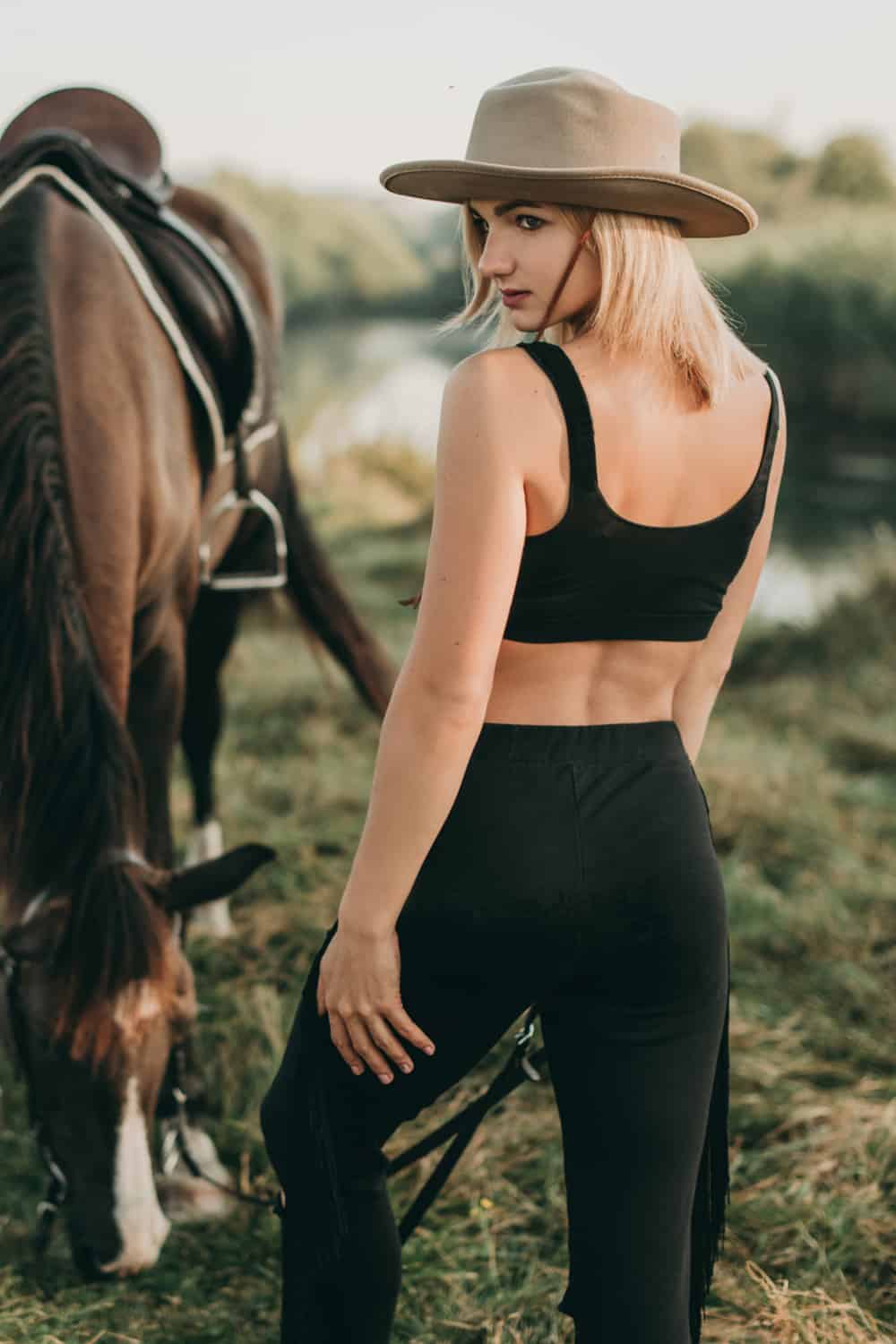
When riding a horse, what you wear under the clothes matters as much as the outfit itself, you don’t have to buy specific riding undergarments, but you should steer clear of briefs, panties, and bras that are not designed for sports.
Sports underwear generally lacks the seams and is more comfortable to wear. If you’re not allergic, opt for microfiber undergarments, as the moisture-wicking fabric will feel more comfortable throughout the day. Alternatively, opt for breathable cotton but make sure the pieces you choose to wear have minimal seams.
Accessories
When riding a horse, the accessories won’t complete your look but rather enhance the experience. Here are a few things you’ll want to have:
- Gloves: Gloves will protect your hands from rubs, especially if your horse likes to pull the reins. They also come in handy on longer rides, protecting the skin on your hands from blisters. Thin fabric gloves are an excellent choice for warm-weather riding, whereas fleece or leather gloves are a more appropriate choice for the winter.
- Half-chaps: You won’t be needing these if you choose a pair of dress boots. However, if you opt for paddock boots, the half-chaps will protect your legs from rubbing against the riding gear. The half-chaps are a sort of leather sleeves that go over your boot and zip all the way up to your knee.
- Neck wrap: A soakable neck wrap can be a life-saver when riding in summer. Similar to scarves, these wraps are made of a fabric that absorbs moisture and then uses it to keep you cool for hours. Ideal, especially when riding on the beach.
- Boot socks: Say goodbye to your usual socks and opt for a pair of tall boot socks that go up at least mid-calf. Otherwise, the sock could slip and become very uncomfortable inside the boot. Heat or cool socks are also a great choice for winter/summer riding.
What to Wear to Your First Horseback Riding Lesson
Horseback Riding Wear Mistakes to Avoid
As you’ve read above, there are no rules set in stone when it comes to appropriate riding attire. However, there are a few mistakes you should avoid. Let’s check them out:
- Never wear high heels or flip-flops: We said above that riding boots should have heels; however, they shouldn’t have high heels. If you attempt to ride a horse while wearing a cute pair of pumps, your foot might slide through the stirrup while the heel gets caught in it. This could destabilize you, and you may fall off. Flip-flops, on the other hand, have no heel and are not tight-fitting either. They could slip off while you get on the horse. If the horse accidentally steps on your foot while you’re wearing flip-flops, it could also do a lot of damage.
- Don’t ride in shorts: There’s a reason why all people riding horses wear long trousers even in the toasty summer weather. When the sun shines bright, warming everything below it, the saddle can become incredibly hot. That, together with the rubbing that occurs from the natural motion, will make your thighs quite unhappy. Whenever you’re riding, remember to wear long pants.
- Don’t ride in your bathing suit: For the same reason, you shouldn’t ride in shorts, don’t try riding with nothing on but your bathing suit bottoms when riding on a beach. Sure, the thing might look romantic in movies, but in real life, you could end up with burns of chaffing.
- Steer clear of runway fashion: Have you ever seen models riding horses at Paris Fashion Week? Of course, you haven’t because haute-couture doesn’t pair well with horseback riding. Cute dresses, oversized sweatshirts, fancy accessories, and glitzy jewelry belong elsewhere – opt for fitted yet comfortable attire.
- Don’t replace the helmet with a hat: Even if you don’t plan to race, accidents can happen. You may believe a cowboy hat is nice, but only a helmet can protect you from injuries if needed.
Summary
Summing it up, horseback riding requires comfortable yet form-fitting attire. Heeled boots are a must, but the heel shouldn’t exceed 1.5 inches, or it could become a hazard.
Long pants are also a must, regardless of the weather. That said, short-sleeved shirts are accepted. What you shouldn’t forget is a helmet, which should fit you perfectly. And now that you know what to wear horseback riding, all you have to do is to buy or rent the right equipment.
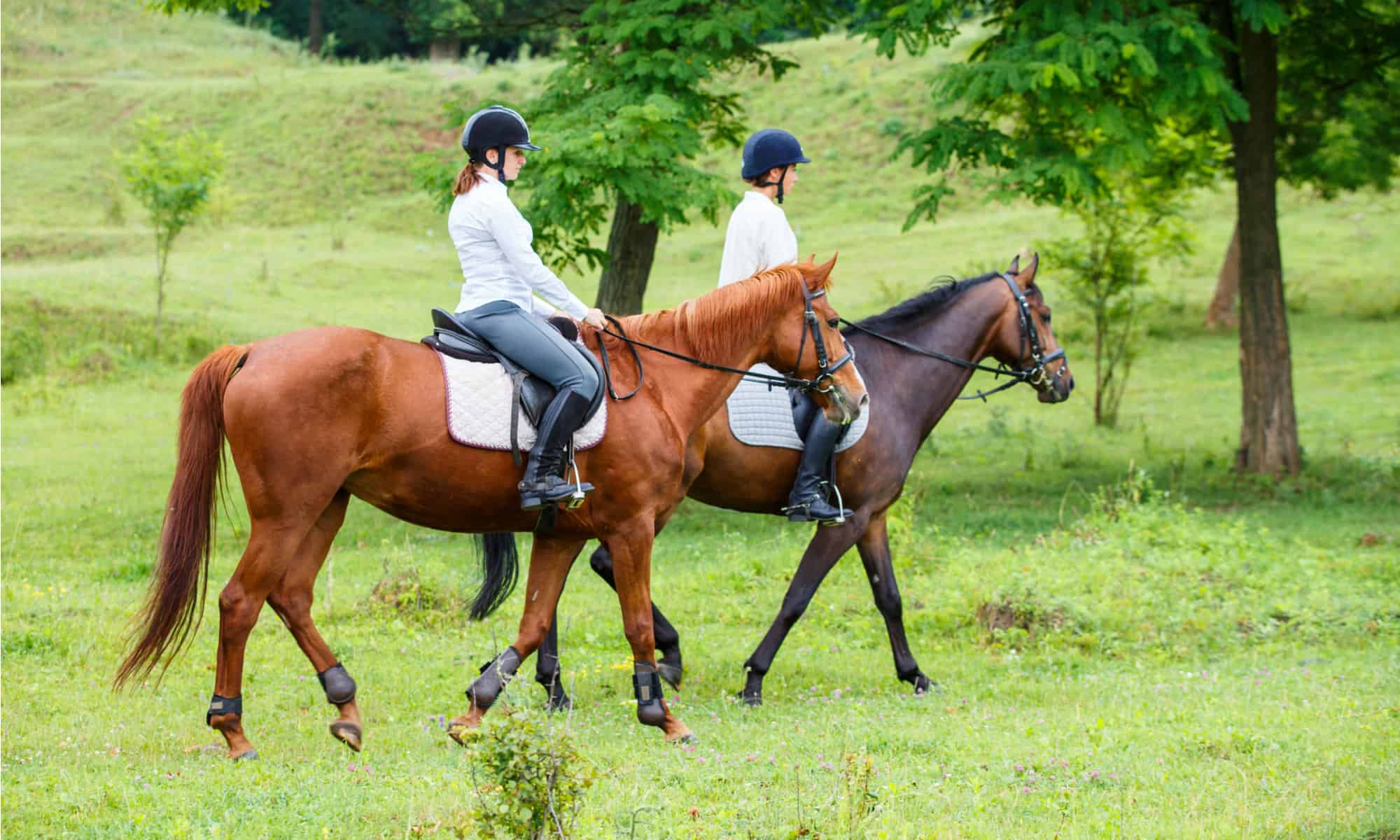








I like how you mentioned that horseback riding needs comfortable yet form-fitting attire and heeled boots should not exceed 1.5 inches. Thanks for these helpful tips and I’ll be sure to keep this in mind. I will surely buy proper attire and helmet with a trusted store that offers Equestrian lifestyle products to ensure safety.